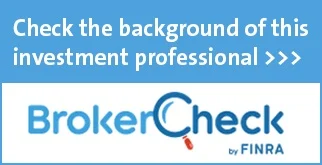Most businesses that offer health insurance to their employees receive an updated group plan from their insurance provider each year. Along with modified coverages, the updated plan also includes the plan’s new premium — which is frequently higher than the previous years. Many businesses accept their plan’s new premium without question (although perhaps with a little grumbling), not realizing that they may be able to lower it slightly by negotiating and comparing other plans offered by insurers.

You May Be Able to Negotiate the Premiums of Your Business’ Health Insurance Plan
Group Health Insurance Plans’ Premiums Are Sometimes Negotiable
Although they aren’t presented as such, group health insurance plans’ premiums are sometimes negotiable. Insurers don’t necessarily have a lot of room to adjust the premiums, as their rates often must be approved by the government, but they sometimes can adjust premiums slightly.
{{cta(‘4a22104f-6b18-4cdd-b70d-9e6a2835299f’,’justifycenter’)}}
For business owners who have a number of employees and are trying to keep their bottom line as low as possible, even a minor rate reduction can yield substantial savings. A business that has 75 employees, for instance, would save $150 per month if it could get its plans’ premiums lowered by $2 per employee per month. An annual savings of $1,800 wouldn’t make or break a business of this size, but no business owner or manager will turn down such savings.
Knowing How Premiums Are Calculated Will Help You Negotiate
Of course, an insurance company is unlikely to budge on their quoted rates unless they’re given good reasons to do so. If you’re a business owner and want to negotiate a lower rate with your business’ plan provider, you’ll first need to know how premiums are calculated. Once you understand how insurers calculate plans’ premiums, you’ll be able to argue for lower rates. There are two specific items to pay attention to: employee age and whether claimants leave your business.
First, group health plan premiums are partly calculated based on the average age of employees, with higher premiums being assessed to businesses that have older employees. Insurers will sometimes use this to justify a rate increase, explaining that a business’ employees are a year older and, therefore, cost more to insure.
If the average age of your business’ employees has decreased in the past year, though, you may be able to use this logic against your business’ insurer. If you’ve recently bought out older employees or hired a bunch of younger workers, point out that the average age of your employees has actually decreased — and not increased — and ask the insurer to take the change in age into account.
{{cta(‘ef68816a-267d-4fa1-be57-4c41c6708618′,’justifycenter’)}}
Second, another factor that affects plans’ premiums is how many claims the beneficiaries of the plan (your employees) have filed. It’s more expensive to insure people who file lots of claims, so insurers frequently quote businesses who have employees that file lots of claims with higher premiums.
If you had a few employees who filed lots of claims in the past but have left your company, you might be able to use this to your advantage as well. Even if you don’t know exactly how many claims your employees filed, you can likely guess if a particular employee is expensive to insure by how much sick time they take. If someone who took lots of sick time was fired, resigned, or retired, ask your business’ plan provider to consider how many claims your current — and not your former — employees filed when calculating premiums.
Get Quotes from Plan Providers
For the best leverage, get quotes from group health insurance providers. These quotes will show you whether your business’ plan is competitively priced. If it’s higher than any quoted plans, you can either use the lower-priced plan as a negotiating tool or even possibly switch to that plan.




